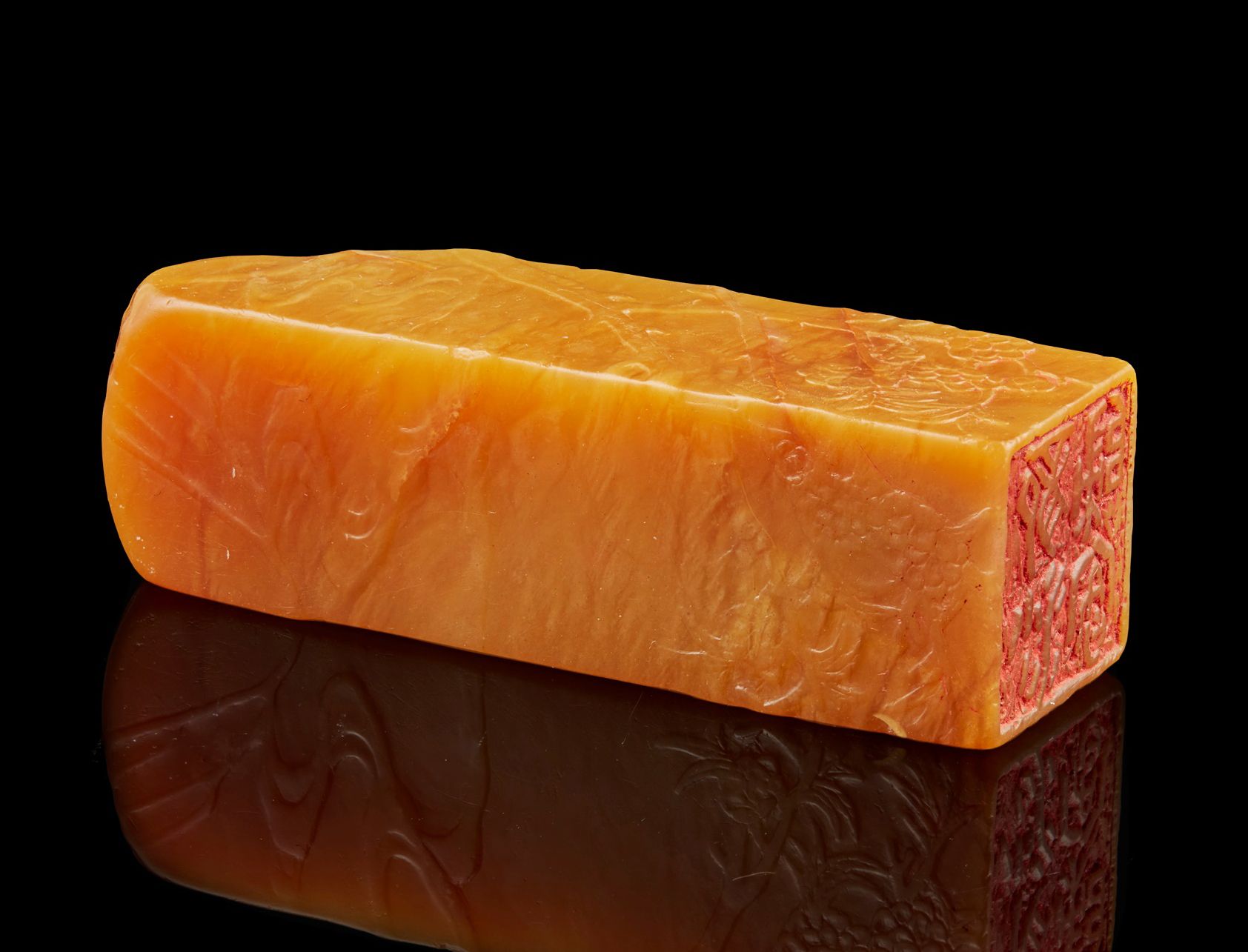"The Emperor of Stones"
Carved on a rare Tianhuang stone, we were delighted to offer a Qing Dynasty seal with the inscription 'Long Sha Gui Ke' (returnees from the desert afar) in our March 2020 auction of Asian Works of Art in Edinburgh.

20 March 2020
Grace Tu
Carved on a rare Tianhuang stone, we were delighted to offer a Qing Dynasty seal with the inscription 'Long Sha Gui Ke' (returnees from the desert afar) in our March 2020 auction of Asian Works of Art in Edinburgh.
Used as a signature to mark important documents, pieces of art or contracts, seals have been in use in China for the last 3,000 years. Private or personal seals could bear the name of the owner, contain a motto or auspicious saying or (in the case of artists) carry the name of the owner’s studio. Collectors also used their seals in order to show ownership or as an expression of admiration on some works of art in their collections. There was no limit to the number of seals one person could have, thus in the course of several centuries, some Chinese calligraphy works and paintings have become covered by dozens of different seals.

Typically made of stone, these seals can also be made of wood, bamboo, bone, or ceramic. Shoushan stones are one of the are most famous seal stones and have often been favoured by Chinese artists. One of the most valuable Shoushan stones is the Tianhuang because of its rarity. The Tianhuang stone is widely acknowledged as the “Emperor of Stones” and is regarded as being more valuable than gold.
Carved in flat low relief with a continuous scene of a bird perching on tree branch in bloom, the seal to be offered in our forthcoming auction is signed by the maker on one side with 'Mei Sheng Mi *’ (the last character is unclear). A four-character inscription 'Long Sha Gui Ke' (returnees from the desert afar) is carved in relief on the face of the seal. This Qing Dynasty Tianhuang seal achieved £20,000 incl premium in our March 2020 auction of Asian Works of Art in Edinburgh.